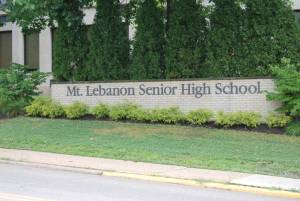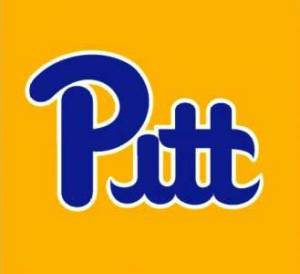Let’s call her Miss B. She and I had enjoyed an all-too-brief romance more than 20 years earlier. Of the many blunders in my life, leaving her probably ranks in the top five. I had come to regret it deeply and thought that visiting her hometown might provide some kind of insight or resolution. I found a cheap flight from Austin to Pittsburgh in July 1999 and went.
The Burgh
I had been in the state of Pennsylvania just once before—in Philadelphia, in the east. Pittsburgh, in the far west, was a city with much different history. It had previously been the epicenter of the American steel industry, but those days were gone. Nearly all of the smoky factories and foundries had closed up and been replaced by high-tech, educational and medical facilities. The confluence of the Monongahela and Allegheny rivers was beautiful, belying the Burgh’s harsh if not ugly reputation. Nearly 700,000 people had lived there in 1950, a number that has been more than halved. This can be attributed to suburbanization and a variety of economic factors. The environment is much better than it was during the steel heyday. In any event, Pittsburgh is now considered one of the most “livable” cities in the United States.
I would be staying there for three days. The first order of business was locating Point Park College, not too far from the city’s Golden Triangle. The college had taken over the former YMCA building and turned it into a dormitory. Since school was out, rooms were available for non-students. Although Pittsburgh is far north of Texas, I found out that its summers are nothing to scoff at. Not even the slightest wind blew during my short time there, and I vividly remember a steamy urban setting.
 A bus and then a taxi took me to an affluent southern suburb named Mt. Lebanon. This is where Miss B was born, raised and attended school. The taxi driver dropped me off at Mt. Lebanon High School. As I walked inside, I wondered whether this was all too much. One friend in Austin had insisted it was. Having come so far, however, I followed through with the plan. A lady in the office found a school annual for the class of 1977, and there she was—a little younger but very recognizable. I spent an hour at the school before taking a taxi to her childhood home. With nothing to lose, I knocked on the door. A friendly woman opened it, heard my story and invited me in. I got a 30-minute tour of Miss B’s one-time abode and departed. That was it for Mt. Lebanon or “Lebo” as she used to say.
A bus and then a taxi took me to an affluent southern suburb named Mt. Lebanon. This is where Miss B was born, raised and attended school. The taxi driver dropped me off at Mt. Lebanon High School. As I walked inside, I wondered whether this was all too much. One friend in Austin had insisted it was. Having come so far, however, I followed through with the plan. A lady in the office found a school annual for the class of 1977, and there she was—a little younger but very recognizable. I spent an hour at the school before taking a taxi to her childhood home. With nothing to lose, I knocked on the door. A friendly woman opened it, heard my story and invited me in. I got a 30-minute tour of Miss B’s one-time abode and departed. That was it for Mt. Lebanon or “Lebo” as she used to say.
Andy, Connie and Ted
I went back to the city. One thing I simply had to do was visit the Andy Warhol Museum. The famous 1960s pop artist hailed from Pittsburgh, and he is the focus of an 88,000-square foot museum on seven floors with about 900 paintings, 2,000 works on paper, 1,000 published prints, 80 sculptures, 4,000 photographs, and 4,000 films and videotaped works by or about Warhol. Classically minded art historians take a dim view of him, with his Campbell’s Soup cans, Marilyn Monroe depictions and so forth. Andy was prolific if nothing else. The museum was and still is the largest in the country dedicated to a single artist.
I managed to find the Pittsburgh Civic Arena, also known as “the Igloo” due to its high silver dome. What an interesting edifice, and how well it served the city from its opening in 1961 until its recent demolition. Opera, political events, basketball, hockey, boxing, ice skating, kennel shows, soccer and much more had taken place there. I mostly cared because it had been home to the Pittsburgh Pipers (1968 ABA champions, led by the great Connie Hawkins).
More than 14 years have passed, so some details have been forgotten. I paid a short visit to the  University of Pittsburgh, rode the cable car up and down Mt. Washington and met an older man who was fishing in the Allegheny River with his grandson. A number of people were having a fine time on board a boat passing nearby; it reverberated with Ted Nugent’s classic, “Stranglehold.” I spent 15 minutes in a tiny cemetery, most of whose headstones were so old as to be indecipherable.
University of Pittsburgh, rode the cable car up and down Mt. Washington and met an older man who was fishing in the Allegheny River with his grandson. A number of people were having a fine time on board a boat passing nearby; it reverberated with Ted Nugent’s classic, “Stranglehold.” I spent 15 minutes in a tiny cemetery, most of whose headstones were so old as to be indecipherable.
Fabled Three Rivers Stadium
The last thing I recall of my trip to Pittsburgh was attending a baseball game between the Pirates and the Cleveland Indians. The Tribe won, on the basis of a fine pitching performance by Bartolo Colon. Three Rivers Stadium was in bad shape. It had been home to the Pirates and the football-playing Steelers since 1970, but it was not long for this world. I stood outside a stadium portal and saw two large construction projects going on—PNC Park for the Bucs and Heinz Field for the Steelers. Three Rivers, scene of a lot of sports history—some of which had been witnessed by Miss B,—was razed in February 2001.


Add Comment